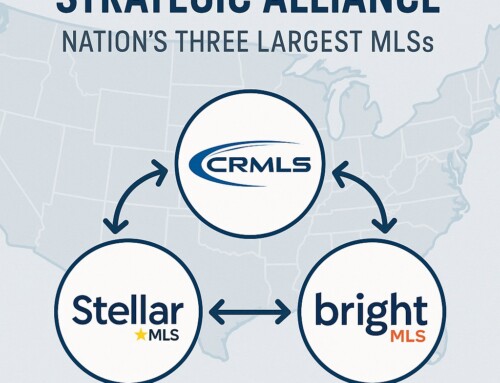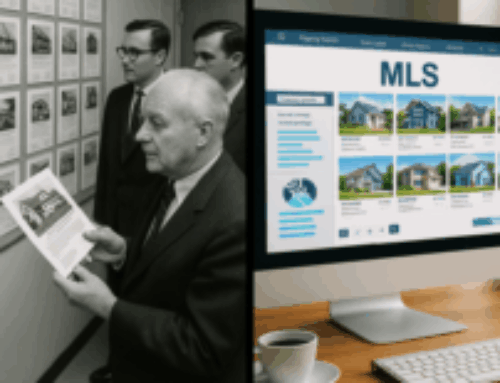 WAV Group partner Victor Lund interviewed CoreLogic® executive Seain Conover to learn his view of the MLS software business. Mr. Conover founded, and along with his dedicated partner, built up an MLS software development company called Tarasoft®. Last year, Tarasoft® was acquired by CoreLogic®. MatrixTM, Tarasoft’s flagship MLS platform brand continues to be offered globally.
WAV Group partner Victor Lund interviewed CoreLogic® executive Seain Conover to learn his view of the MLS software business. Mr. Conover founded, and along with his dedicated partner, built up an MLS software development company called Tarasoft®. Last year, Tarasoft® was acquired by CoreLogic®. MatrixTM, Tarasoft’s flagship MLS platform brand continues to be offered globally.
Why did you sell Tarasoft® to CoreLogic®?
It is always fun to get the conversation started with a challenging question. If you know Seain, you know that he is a fairly reserved person with a kind heart, great work ethic and a big smile. He has never been one for bravado or self-aggrandizement.
As the story goes, Tarasoft® had a long standing relationship with First American/CoreLogic®. There were many MLS installations where Tarasoft® would provide the core MLS system, and CoreLogic® would provide other data like Tax data, Flood Data, Census data, Plat Map data, AVM, etc. Even as competitors on the base MLS system, they were collaborators in delivering a complete solution to the client. Given this positive working history and given an increasing complexity in the MLS software industry as a whole, Conover believed that only under the CoreLogic® brand, could MatrixTM grow and evolve gracefully, towards that “next level.”
How does Matrix fit in with other systems at CoreLogic®?
Today, CoreLogic® provides three go-forward/primary MLS systems: Fusion, Matrix and InnoVia, along with both MLXchange and Tempo. Conover points out that each of those systems are very good at meeting the needs of the clients that use them. For CoreLogic®, having five MLS systems is like having five children; you love them all and want them all to be successful. Each system has its own unique character, its own friends and its own challenges. In the case for MatrixTM, there was great geographic synergy with CoreLogic®. MatrixTM has a significant presence in the Mid-Atlantic, West Coast, Northwest, Canada and the Heartland by way of 21 installations in mostly large MLS markets. CoreLogic® has a strong presence most everywhere else, with 153 installations for large, medium, and small customers alike. “We felt there was a very great fit,” says Conover.
What role will mobile applications play in the future of MLS?
In speaking of MatrixTM, at its core is support for all browsers, including Safari for Mac. As iOS devices grew in adoption, the system accommodated those screens and browsers too. “The trajectory of Apple’s iPad and iPhone adoption makes iOS a serious platform for the MLS software industry,” says Conover. Currently, some Matrix accounts are running at a rate of nearly 10 percent for iOS logins.
Conover is slightly torn between mobile browser support and the mobile application approach. “Applications do a great job at leveraging 100% of the intelligence of the mobile device,” says Conover. But, when aiming for nearly identical functionality in mobile-specific applications, there is the risk of dividing development efforts. Moreover, mobile devices have yet to find solutions for all of the additional features and auxiliary software services of the MLS that today’s professional REALTOR relies upon.
What trends do you see in MLS software?
Mapping immersion has long been a key focus for MLS software development and Conover sees that trend continuing. The mapping engine is increasingly the de facto starting point for MLS data presentation, along with the ability to layer rich data on top of the map to tell the business story of the real estate market.
Conover ultimately describes an MLS platform as “an operating system of a Realtor’s daily life” and as a continuum joining the professional and the consumer on unified, evolving platform. Such an operating system flourishes by way of supporting the many, many unique choices that are made by each MLS customer. “To the degree that our customer’s delivery model of MLS services evolves, we are eternally prepared to support them,” explained Conover.
What are challenges in the industry today?
Conover sees not technical challenges, but a philosophical one. “Our collective acceptance of change in general, driven in part by the rising needs of the consumer,” says Conover. While this is potentially an “exciting evolution,” Conover observes that these needs are being met by a fractured industry with incongruent attitudes about how to best serve them, and sometimes—if at all—on various topics. “At its purest level, our industry exists today to match qualified buyers with willing sellers, as in, consumers with consumers. Given the fact that there are always challenges to our Real Estate industry’s leadership role in this matching effort, I’ve always believed that we ought to embrace the idea of leading positive change, however daring, not fearing it. My life has been invested in this space, and if only this industry could begin thinking as one, working as one, all the while wholeheartedly embracing the demanding needs of the consumer, we will all have an incredible future.
Remember, we are all consumers first.”




